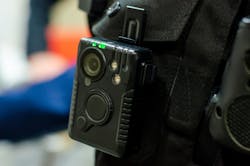How body camera analytics can improve policing and community trust
Over the past year, public focus on social justice movements brought the very nature of police (and their role in our communities) to the forefront of America's minds. A stark divide has grown between those who see themselves as pro police, and those that are in the “pro police reform” camp. The reality is that there are nuances and challenges with each side’s ideals and despite differing views, a word that repeatedly comes up on both sides of the conversation is accountability. While it may seem simple, leaders and activists alike struggle to find solutions that will create this accountability, so that we may build better trust within our communities.
These historic calls for police accountability, reform, and attempts at racial reckoning have also left police departments with morale issues. Agencies are struggling to retain the officers they do have, while also being able to attract the next generation of law enforcement to their forces. The digital age also opens up issues for law enforcement as social media and the Internet create more visibility into what law enforcement faces each day.
As the country continues to grapple with the fallout from the pandemic, and sharp increases in violent crime plague major cities, law enforcement is placed at a critical juncture. Despite calls from both sides regarding police reform to establish better accountability within policing, there remains uncertainty about what changes need to be made in order to make progress at a state-by-state or federal level.
Momentum for Police Reform is Growing
One method to implement change within law enforcement is through new legislation, which can touch a variety of policing issues -- from funding, to de-escalation tactics and technology implementation. States like Michigan, North Carolina and Wisconsin are seeing support for new legislation heat up as lawmakers look closely at how to instill greater trust within the community, and drive better policing via the implementation of technology-focused bills.
Key legislation across the country includes proposed changes to methodologies behind how officer body camera data is analyzed, with the understanding that fundamental issues with policing can be uncovered by more closely examining the ways officers and civilians interact.
In addition to calls to re-examine the role of the police, it can’t be understated that law enforcement agencies are moving through an accelerated period of digital transformation. Today’s investigations involve overwhelming amounts of data and evidence that is difficult to properly manage. From data stored on physical evidence, like phones and other devices, to the hours and hours of body camera footage collected each day, agencies of all sizes and resource levels struggle to collect, store and analyze all their data.
Body-worn cameras have become essential tech tools for law enforcement, with technology that’s constantly being updated and improved. The prevalence of the body camera within agencies now puts us in the place where we need to develop real standards around the way communities are handling this vital data in order to enhance day-to-day policing.
Law Enforcement and the New Role of Technology
Those on both sides of the police reform argument want change, but after a year of back-and-forth discussions, we’ve not yet arrived at a conclusion about how to do it. One potential solution is looking at solutions built around big data and advanced analytics that offer law enforcement agencies hard evidence in police reform discussions, and can help both agencies and the public achieve improvements in policing.
Some within the industry have the mindset that data only needs to be examined when an incident occurs. However, if agencies are able to shift this mindset and view data as a positive asset to understanding the strengths and weaknesses within a force’s community engagement, it can lead to the creation and implementation of better training and de-escalation techniques.
Understanding the way law enforcement and their communities interact may make some officers uneasy given the current environment, but better analysis can point to where there is room for improved practices and create a win-win situation for both the officers and the community they serve. For example, if an agency learns through body camera audio analytics that a certain officer has a strong ability to de-escalate or control deadly force during volatile situations, the agency can use that individual as a resource to improve training across the entire force.
As reform discussions and legislation continue to be pushed forward both at the state and federal levels, new technologies will also have an important role in helping to create better policing practices and policy, while building trust within communities.
Looking Ahead
Despite pandemic budget cuts and national calls to ‘defund the police’, agency spending on new technologies and software continues to grow. Decision makers within law enforcement realize that technology solutions can drive efficiency and foster accountability. It’s clear that agencies are looking for ways to enact change, and new technology offerings, built with law enforcement in mind, will be invaluable for departments.
Law enforcement agencies around the country are each grappling with their own decisions around how to improve the state of policing. In this new environment, the solutions for police accountability and transparency are being driven by legislation and particularly, technology, which will equip teams with the right tools that can help implement change. Creating these new standards around technology will enable agencies to become more accountable and efficient, while reducing department budgets that can drive more efficient policing in the future.
About the Author:
Anthony Treviño is the former Assistant Chief of Police for San Antonio and a trusted advisor to Truleo, a body camera audio analysis platform. Treviño brings over 25 years of relevant experience and previously served as a subject matter expert for the Homeland Security Science and Technology Commercialization Subcommittee, and was a member of the Technology Committee for the Major Cities Chiefs Association.



